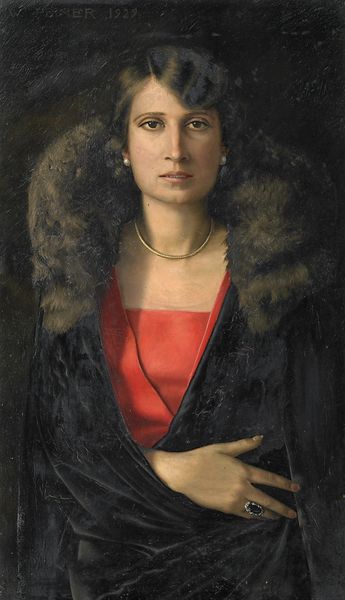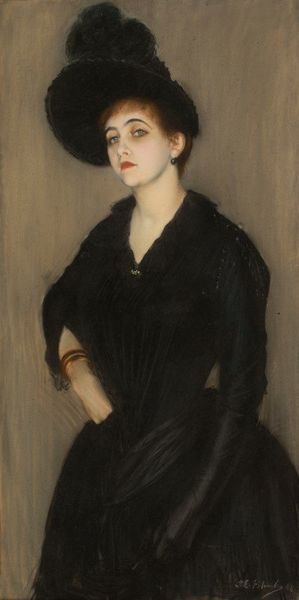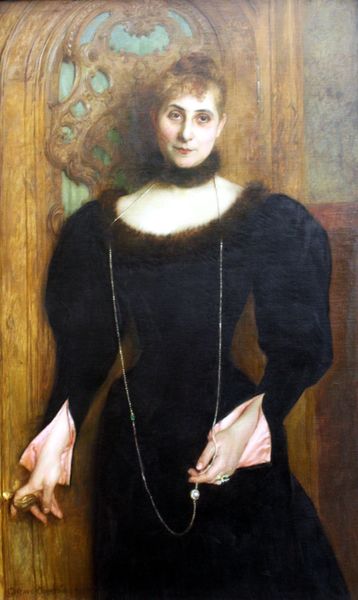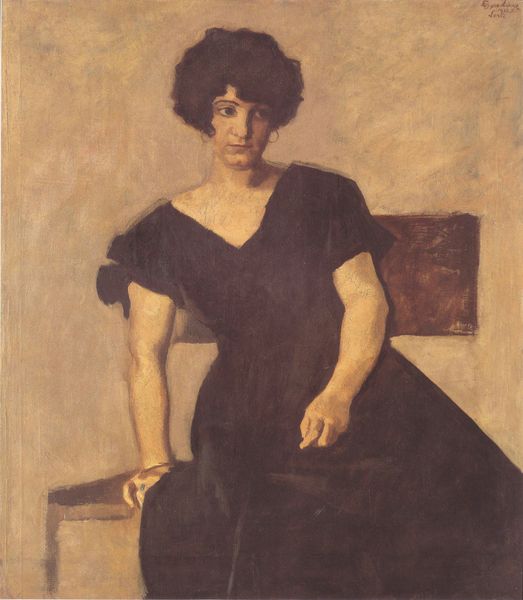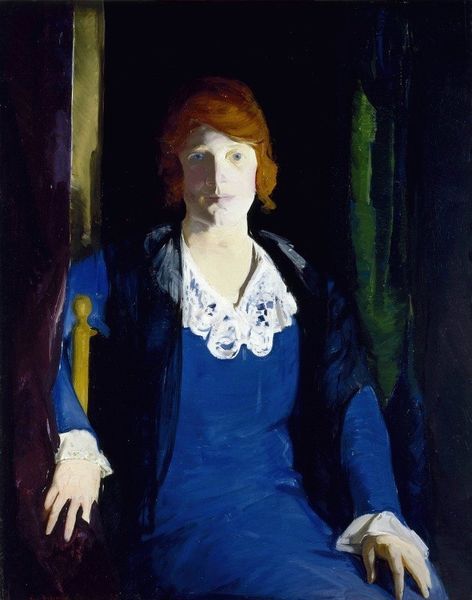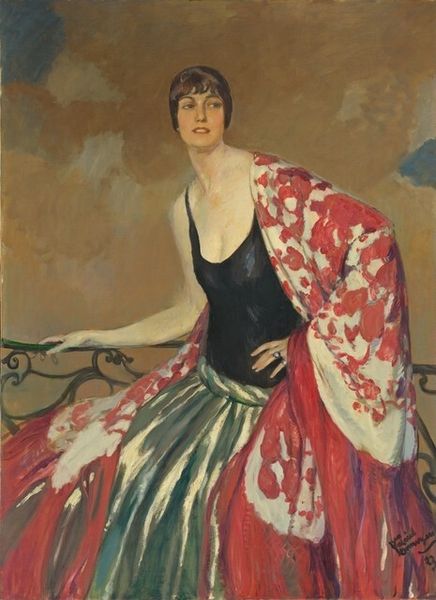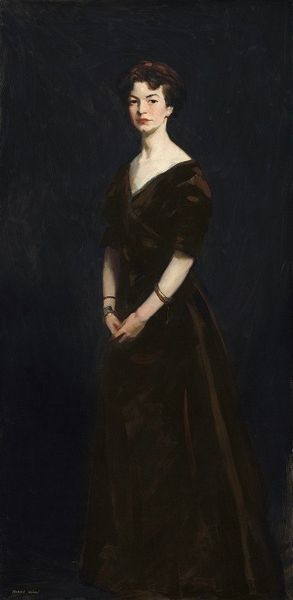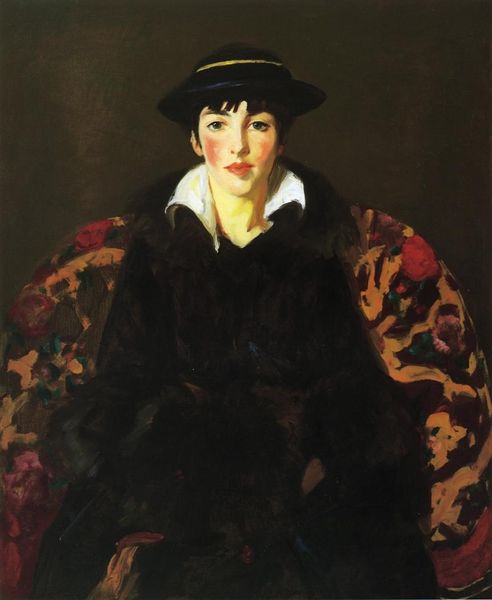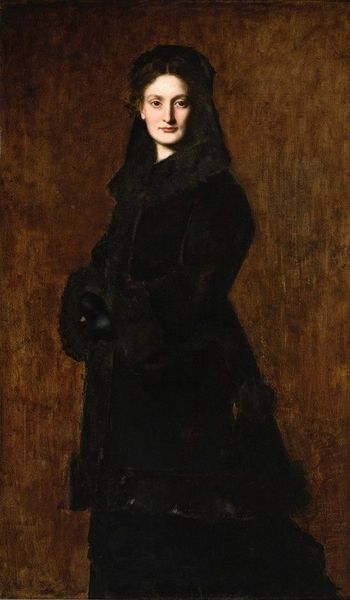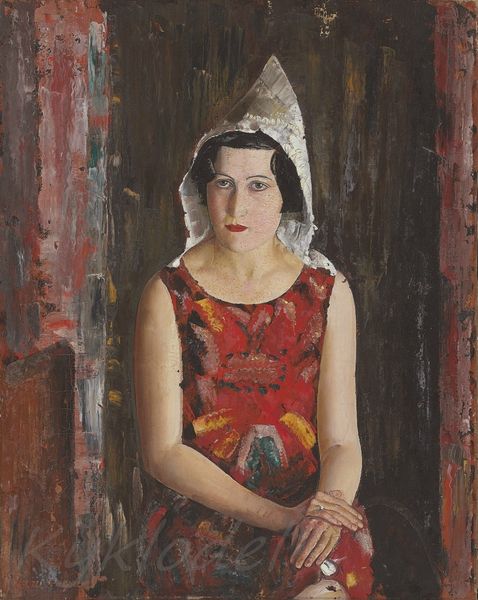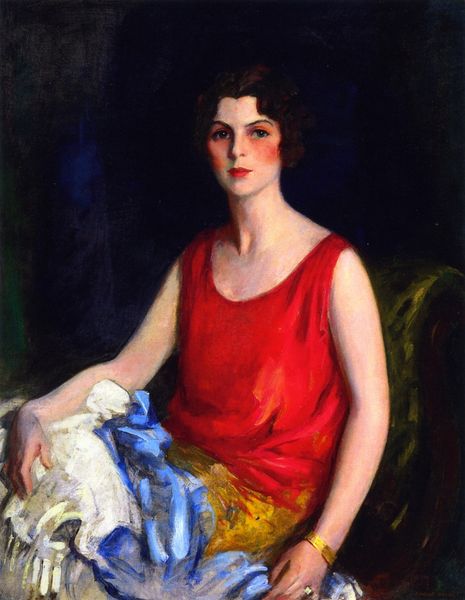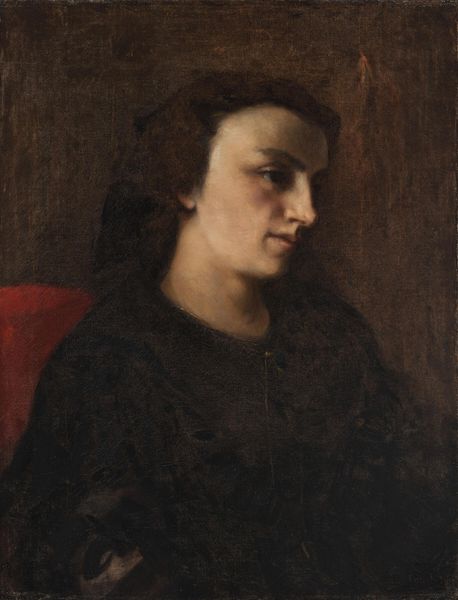
painting, oil-paint
#
portrait
#
character portrait
#
self-portrait
#
head
#
painting
#
oil-paint
#
portrait subject
#
harlem-renaissance
#
figuration
#
portrait reference
#
portrait head and shoulder
#
facial portrait
#
lady
#
portrait art
#
portrait character photography
#
modernism
#
fine art portrait
#
realism
#
celebrity portrait
#
digital portrait
Dimensions: 38 x 30.5 cm
Copyright: Archibald Motley,Fair Use
Curator: Let's discuss Archibald Motley's "The Octoroon Girl," painted in 1925. It’s a striking portrait from the Harlem Renaissance. Editor: My first impression is that it's incredibly poised, almost melancholic. The red against the dark fabric creates such a vivid contrast; it highlights her face and hands, but also draws your eye to the materiality of her garments. Curator: Motley was deeply engaged in portraying the complexities of identity, particularly within the African American community. The term “octoroon” referred to someone one-eighth Black, highlighting the social constructs around race. He wanted to portray different representations of his culture, but he always seemed to struggle with representing women. Editor: I am struck by the labor and the process that went into this image. It's oil on canvas; the texture must be gorgeous in person, capturing the sheen of the fabrics and the subtle variations in her skin tone. I am always struck by portraits and their capability to render class differences by paying careful attention to fashion, jewelry, and all other surfaces, like the material covering the seat in the background. Curator: Absolutely, and you see that reflected in how it was received. Motley's work often challenged the established art world’s expectations. This piece embodies the debates of the time surrounding representation and visibility. Black women were often either invisible or fetishized by American cultural institutions, particularly museums. Editor: The artist is careful in setting up the sitter’s scene, no? The figure sits in what appears to be the artist’s studio—there is a sketch and other symbolic works, like the clown figurine on the books, behind her to her left, so we cannot take the image at face value alone. Instead, there are symbols. Curator: A very interesting observation. Motley positions his sitter in a studio, indicating, on one hand, to the cultural milieu and creativity and freedom offered by places like Harlem, while still placing his Black sitter in conversation with a historically white-dominated tradition, the formal portrait. Editor: This work is like a meditation on the materials, social meanings, and performative aspect of identity in a way that I find especially evocative. Curator: Yes, it is really about how an artist negotiates his own role within social constructs of art, class, and society. Editor: I see it as an object in constant communication with the economic realities of Harlem during that period.
Comments
No comments
Be the first to comment and join the conversation on the ultimate creative platform.
